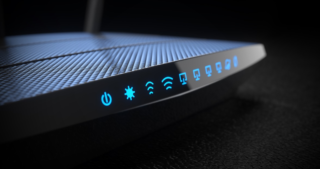5 Not So Obvious Ways to Speed Up Your Home Internet

The demand on the internet provides has increased significantly in recent months due to swathes of us both working and learning from home. Because of this, many of us have experienced an internet connection that is a little slower than we would like.
Read on for our top pro tactics on how to squeeze every last ounce of internet speed out of your home broadband line.
- The Master Socket
If you have an ADSL or VSDL connection to your home, then this tip is not to be missed!
First of all, ensure that you have your internet modem plugged into your master socket. It is important to plug directly into the master socket, as opposed to via an extension lead. The reason for this is that as the phone cable will become spliced to these extensions, muddying the lines clarity and giving you a slower internet connection.
Connecting to the master socket avoids problems with internal home wiring and, in theory, should provide a direct connection to the telephone line.
- Microfilters
Again, this applies to ADSL and VDSL lines. Microfilters split the signal on the phone line for data.
Most modern phone sockets now include an inbuilt microfilter. However, if you have an older phone socket, then you will need to attach a microfilter to all of your home’s phone sockets.
Lines without microfilters run slower than those that do. The reason for this is that the voice calls on the line will temporality stop data connection, and the phone company system will reduce the line speed to try to give a more stable connection.
- Hardware
Many of the larger internet providers supply their users with free internet modems or Wi-Fi routers. It may appear as if you’re getting a good deal with free hardware. The reality is that this free hardware is usually cheap. Their poor quality can lead to sluggish processing speeds and unreliable internet connectivity.

So, ensure that you invest in a good quality Wi-Fi router or modem for your home.
- Wi-Fi Coverage
Wireless signal around the home is now of paramount importance for those now working from home via mobile devices or laptops.
Hardwiring your work computer into the router is a great way to boost speed. A hardwired connection should give a slight speed increase (this, of course, depending on how strong your Wi-Fi signal is).
You should also survey your home and see where you might have Wi-Fi blackspots. Deploying a mesh Wi-Fi network in your home can also help boost your signal throughout the home.
- DNS
Domain Name Resolution (DNS) is a task usually performed by your home router to find website addresses when you are using your internet browser.
Most internet providers take on the task of providing DNS services. However, there are free specialist solutions where you can get faster DNS speeds. Some of the most popular specialists include Cloudflare, Google DNS and Open DNS.

Setting your home router to one of these dedicated DNS solutions will undoubtedly give you a snappier browsing experience at home.
If you found this article useful and would like some advice on how to speed up your home internet – get in touch with us today.

